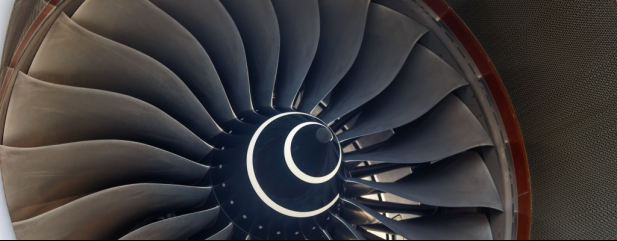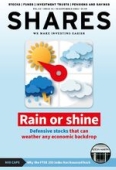Archived article
Please note that tax, investment, pension and ISA rules can change and the information and any views contained in this article may now be inaccurate.
Corporate bonds are looking more attractive – here’s how they stack up

Two developments have combined in 2022 to make corporate bonds a potentially more attractive option for investors.
First the risk-free rate (the yield on government bonds) which all other bonds are priced against has gone up. At the same time, the difference between the risk-free rate and the yield on corporate debt, which is known as credit spreads, has also moved higher.
The combination of these intertwined factors has prompted Lesley Dunn, manager of Baillie Gifford Strategic Bond Fund (0594774), to say: ‘This is the first time in a long time we have been excited about valuations in the corporate bond market.’
She observes the yield on the Baillie Gifford fund has roughly doubled to 4.1% thanks to this move higher in both the risk-free rate and credit spreads. The fall in bond prices means there is scope for capital appreciation from this asset class as bond prices recover, again for the first time in ages.
WHAT ARE CORPORATE BONDS?
Companies sell bonds to investors in exchange for cash which they have to repay over an agreed timeframe – this can range from a few months to 30 years.
They pay a regular interest payment to the investor which is called ‘the coupon’. In most cases the coupon remains fixed until the end of life of the bond.
The issue price of the bond is called ‘par value’ and once the bond term ends, referred to as ‘maturity’, the initial amount of money received for the bond is paid back at par value.
While payments from bonds are not guaranteed, creditors are above shareholders in the pecking order if a company was to run into financial trouble and there were claims on its assets.
With bonds, the investor (the person buying the bond) must weigh up the creditworthiness of the issuer or borrower (the entity issuing the bond), especially in higher risk corporate bonds, because there is always a chance that the original capital will not be paid back in full.
Corporate bonds are separated into investment grade and non-investment grade. In the latest trading update from aerospace engineer
Rolls-Royce (RR.), for example, it talked about aiming ‘to return to an investment grade credit profile in the medium term supported by free cash flow generation’ as it pays down debt which piled up during the pandemic.
HOW TO INVEST IN BONDS THROUGH FUNDS
Investing in corporate bonds can be difficult for ordinary investors so bond funds are an alternative way of putting cash into this part of the market and benefiting from the higher yields available. The performance of bond funds has been poor over the last 12 months thanks to the big drop in bond prices. Lower prices now make them more attractive.
Some funds specialise in high-yield bonds, some are narrowly focused on investment grade or government bonds, while ‘strategic’ bond funds have more flexibility to invest in different types of fixed-income assets.
Baillie Gifford Strategic Bond Fund takes this a step further by pursuing a definite ‘bottom-up approach’. Where some issuers might be disregarded by investors thanks to the wider macro environment, Dunn and her colleagues are prepared to keep an open mind. The fund takes at least a three-to-five-year view with its investments.
The historic returns delivered by the fund are not outstanding compared with the strategic bond peer group, but the current market conditions and the indiscriminate way bonds have been sold off are fertile ground for its bottom-up strategy. Ongoing charges are 0.52% and it pays out a monthly dividend.
Dunn observes that the fund has been buying bonds from banks which should benefit from rising interest rates. ‘Santander (SAN:BME) bonds are yielding 7.5% despite it always delivering in the past and even bonds from names like Barclays (BARC), JPMorgan (JPM) and Natwest (NWG) are offering 6% yields,’ she says.
Which strategic bond funds have performed best?
The table in this article shows a selection of larger corporate bond funds and how they have performed over time.
It has been a difficult period for the sector, particularly of late as years of consistent gains for the wider asset class have unwound due to rising interest rates and mounting inflation.
Merian Global Strategic Bond (B1XG8J6) and Allianz Strategic Bond (BYT2QW8) impress on a five-year view.
The Allianz product uses derivatives to take currency exposure and short and long positions on the bond market and made some smart investment decisions during the pandemic-inspired volatility in 2020.
On a 10-year view the best performer is GAM Star Credit Opportunities (B54L8Q5), which benefits from the four-decade experience of its well-regarded manager Anthony Smouha, though investors do have to pay higher ongoing charges of 1.11% for this expertise.
HOW DOES ESG COME INTO IT?
When the Baillie Gifford fund researches a bond issuer it is looking for resilience and part of that is considering ESG (environmental, social and governance) factors.
Dunn explains this doesn’t mean excluding specific sectors. She cites the example of a US oil company whose bonds the fund recently sold because they were insufficiently committed to the energy transition, drawing the contrast with another holding, the debt of UK-based Neptune Energy, which has credible targets in place.
‘While we don’t exclude sectors, there are some like tobacco, where we don’t have an allocation, and they would have a hard time fitting in our sustainability framework,’ Dunn adds.
The fund has a higher allocation to the debt of US and UK companies than it does to European firms and has recently been moving out of higher yielding bonds and into investment grade bonds. This reflects improved valuations for the latter thanks to the recent sell-off and an aim to protect the portfolio against default risk amid a downturn in the global economy.
Important information:
These articles are provided by Shares magazine which is published by AJ Bell Media, a part of AJ Bell. Shares is not written by AJ Bell.
Shares is provided for your general information and use and is not a personal recommendation to invest. It is not intended to be relied upon by you in making or not making any investment decisions. The investments referred to in these articles will not be suitable for all investors. If in doubt please seek appropriate independent financial advice.
Investors acting on the information in these articles do so at their own risk and AJ Bell Media and its staff do not accept liability for losses suffered by investors as a result of their investment decisions.
Issue contents
Feature
Great Ideas
News
- Mid-cap stocks reverse losing streak versus FTSE 100
- Why retail investors in JPMorgan Russian Securities are sounding the alarm on changes
- Veterinary group CVS plans to double profitability over the next five years
- Falling house prices and higher sales cancellations: why property market-related shares are down again
- Chinese stocks surge on prospect of end to strict Covid measures
- Hasbro hurt as toy demand drops following price hikes
- Strong customer demand puts Caterpillar shares 10% ahead on the year
 magazine
magazine








